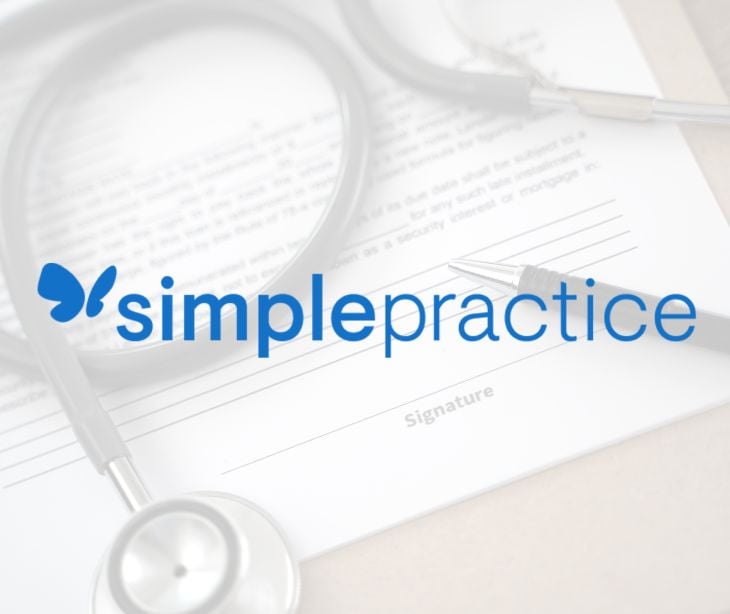
In today’s digital age, mental health professionals need a reliable and efficient tech stack to manage their practices. By leveraging the right tools, therapists can streamline administrative tasks, enhance client communication, and improve overall service delivery.
We’ll explore the essential digital components of a mental health practice, focusing on the “what” and “why” of each tool. Remember, it’s crucial to use HIPAA-compliant solutions to protect client privacy and comply with regulations.
1. Practice Management System (PMS)
What: A PMS is a comprehensive software solution for managing your practice, including scheduling appointments, managing client records, billing, and reporting.
Why: A PMS streamlines administrative tasks, allowing you to focus more on client care. It also helps you stay organized, manage your time effectively, and maintain a professional image.
2. Electronic Health Records (EHR) / Electronic Medical Records (EMR)
What: EHR/EMR systems digitally store and manage clients’ medical records and treatment plans.
Why: EHR/EMR systems improve record-keeping accuracy, facilitate better communication among care providers, and help track clients’ progress over time.
Related: HHS alert: take a proactive approach to safeguarding EHR
3. Teletherapy platform
What: Teletherapy platforms enable video conferencing for remote therapy sessions.
Why: Teletherapy expands your reach to clients who cannot access your physical office, offers flexibility for scheduling, and can reduce no-shows.
Related: Can Zoom be used for teletherapy?
4. Secure messaging and communication
What: Secure, HIPAA compliant email, messaging, and communication tools provide encrypted email, text, voice, and video chat capabilities to communicate with clients and colleagues.
Why: These tools protect sensitive information, facilitate client engagement, and promote collaboration among healthcare providers.
Related: How to send HIPAA compliant emails
5. Online Scheduling and Appointment Reminders
What: Online scheduling tools allow clients to book appointments and receive reminders via email or text message.
Why: These tools improve appointment attendance rates, reduce administrative workload, and enhance client satisfaction by offering a convenient booking experience.
Related: Best HIPAA compliant appointment scheduling software (and which to avoid)
6. Billing and invoicing
What: Billing and invoicing software automates the process of generating, sending, and tracking invoices and payments.
Why: This software reduces errors, saves time, and helps you maintain a healthy cash flow for your practice.
7. Payment processing
What: Payment processing tools enable you to accept and manage various payment methods, including credit cards and e-payments.
Why: Offering multiple payment options simplifies the payment process, making it easier for clients and ensuring timely payments for your services.
8. Website and marketing
What: A professional website and marketing tools help promote your practice online, attract new clients, and establish your brand.
Why: An active online presence is essential to reach a broader audience, build credibility, and share valuable information about your services.
Related: Popular non-HIPAA compliant web hosts to avoid
9. Email marketing and newsletters
What: HIPAA compliant email marketing tools allow you to create, send, and manage email campaigns and newsletters to engage with clients and prospects.
Why: Regular communication via email helps nurture relationships, increase client retention, and attract new clients through referrals.
10. Secure File Storage and Sharing
What: Secure file storage and sharing solutions allow you to securely store, access, and share documents and files with clients and colleagues.
Why: These tools protect sensitive data, facilitate collaboration, and ensure compliance with HIPAA regulations.
11. Client Forms and Assessments
What: HIPAA compliant forms and assessment tools allow you to create, distribute, and analyze questionnaires, intake forms, and evaluations.
Why: These tools save time, improve data accuracy, and enhance the client onboarding experience.
How to choose the right tools for your mental health practice tech stack
Selecting the right tech stack for your mental health practice involves understanding your requirements. Research available options and evaluate each tool based on the following aspects:
- Assess your core needs: Identify the features and functionalities essential for your practice in each category.
- Prioritize ease of use: Choose user-friendly tools that simplify the learning curve and encourage client and staff adoption.
- Consider customization options: Customizable tools allow you to tailor the system to your practice’s specific needs.
- Evaluate integration capabilities: Consider whether the tools can work seamlessly with your existing tech stack.
- Check for scalability: Choose solutions that can grow with your practice as your needs evolve.
- Read reviews and testimonials: Learn from other professionals’ experiences and insights to make informed decisions.
- Confirm HIPAA compliance: All tools should meet privacy and security regulations to protect sensitive client information.
Training
Training is essential when building your mental health practice tech stack, even if you’re a solo practice or have staff.
A covered entity must train all workforce members regarding its security policies and procedures, and must have and apply appropriate sanctions against workforce members who violate its policies and procedures.
Summary of the HIPAA Security Rule
Any software tool you select must have resources like tutorials, webinars, and customer support to learn the system and train your staff. Moreover, proper training helps you leverage the full potential of your tech stack and avoid common mistakes.
Insufficient employee training is one of the main PHI pitfalls for therapy practices that put HIPAA compliance at risk.
Essential tools for a mental health practice
Incorporating these essential tools into your mental health practice can improve efficiency, enhance client care, and grow your business. Always prioritize HIPAA-compliant solutions to protect client privacy and maintain regulatory compliance.
Your unique practice requirements will determine the specific tools you choose, so assessing your needs and preferences is essential before selecting your mental health practice tech stack. Invest in the right tools and technologies, and streamline your practice operations. This allows you to focus more on providing exceptional mental health care to your clients.
Subscribe to Paubox Weekly
Every Friday we'll bring you the most important news from Paubox. Our aim is to make you smarter, faster.



 Dean Levitt
Dean Levitt

